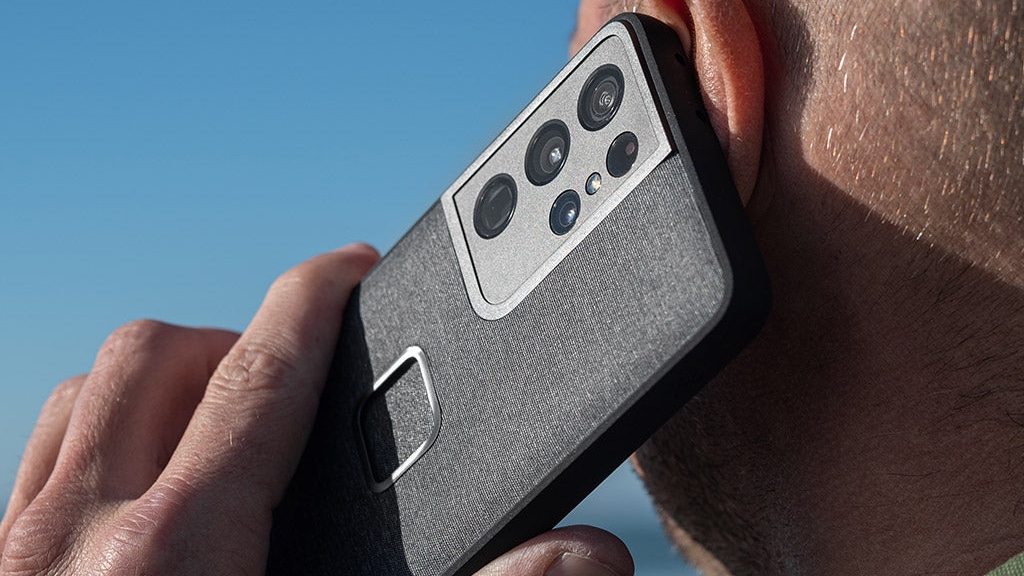EU pushes for 5 years of Android updates — and that’s good news for everyone
We're all for longer Android update support

One of the biggest problems with Android is the lack of long-term support. Software updates can extend a device’s lifespan by a number of years, but it’s all reliant on the phone maker actually offering them. Fortunately, the European Union might be set to force them to offer more — among other measures to boost device longevity.
Currently a typical Android device offers two to three years of software updates — often two years of full Android updates and three years of security patches. A new draft proposal in the EU seeks to formalize some regulations that would force phone makers to support devices for at least five years.
More specifically, phone makers would need to offer five years of security updates. They’d only be required to release full Android updates for three years.
On top of this, the EU is pushing for rules that allow self-repair, ensuring phone makers offer repair parts and services for at least five years after sale. Parts include batteries, displays, cameras, charging ports, mechanical buttons, microphone and speakers, plus any hinge assemblies involved — which includes those used on folding phones and tablets.
If that wasn’t enough, the proposals want to set a minimum standard of phone battery quality. That’s listed as at least 83% of the original rated capacity after 500 full charging cycles, and 80% after 1,000. Phone makers will then be given a choice: meet those standards or ensure replacement batteries and covers are available. That's the more easily-replaceable batteries from the Android phones of old, rather than an appointment with a repair technician.
According to the proposal, this is all about setting out “ecodesign requirements for mobile phones, cordless phones, and slate tablets.” The idea being that better software support, higher quality batteries and the ability to get devices repaired will encourage people to keep their phones for longer — and prevent e-waste in the process.
Android support: How things stand right now
Currently very few Android phones actually have this proposed level of software support. Google Pixel phones and certain Samsung devices are the best known examples. The Pixel 6 range currently gets three years of Android updates and five years of Android security updates.
Sign up to get the BEST of Tom's Guide direct to your inbox.
Get instant access to breaking news, the hottest reviews, great deals and helpful tips.
Meanwhile, Samsung offers four years of Android updates and five years of security patches. However, only select phones, primarily flagships, get this level of support. These rules would force Samsung, and all other phone makers, to ensure all their phones have this level of software longevity.
Apple would likely be unaffected by the new rules surrounding updates, since it has a history of supporting older devices. The recent iOS 16 update supports devices up to and including the iPhone 8, which was released in 2017. That’s five years of iOS and security updates.
However, Apple may fall foul of the repair and battery requirements. As Ars Technica notes, iPhone batteries are currently rated to have 80% capacity after 500 charging cycles — noticeably lower than what the EU would be happy with.
Likewise, Apple has historically been resistant to the idea of self or third party repairs, and its relatively new iPhone Self Service Repair kits come with a bunch of caveats. Notably the high cost, tying parts to specific devices and the fact that the oldest device with official self-repair support is the two-year old iPhone 12.
This wouldn’t be the first time Apple clashed with the EU. The company has resisted attempts to force it to adopt a standard charging port to the iPhone, though rumors suggest the USB-C iPhone may not be too far off. Just in time for new EU rules to force their hand.
Why these changes would be good news for everyone
While these new regulations, if passed, would only affect the EU, there’s been a precedent for those rules to roll out globally. The standard charging cable is the best known example, with the EU threatening phone makers to convince them to ditch proprietary cables in favor of microUSB.
This led to all non-Apple smartphones adopting microUSB, and later USB-C, as a result. Because it’s easier to have a single design for every market, rather than developing and producing EU-specific devices.
I can imagine software updates following the same logic. If a phone maker has to invest time and money to develop and release updates for the European market, then there’s little to gain from restricting access everywhere else. At the very least it would stop them failing behind competitors, who might take advantage of the disparity in marketing
Security updates are the clincher here, since having an out of date phone can put you and your data at risk. Having the latest software features and designs is nice, but it's something you can live without. So by mandating at least five years of support, people may not feel compelled to buy a brand new device to stay safe.
That means anyone buying one of the best used smartphones will enjoy the benefits of increased update support — something they don’t get a lot of right now.
To top it all off, the rules mean your phone’s hardware should last longer. Whether that’s from improved battery technology, or the fact you can more easily replace and repair parts when things do go wrong. It all adds up, and it means you can keep hold of your device for longer.
Of course, as is always the way with new regulations, it may be some time before these proposals actually take effect. Feedback is being sought until September 28, and a version of the new rules is ready to be adopted in late 2022. However, the majority of the changes wouldn’t take place until 12 months after they’re approved.
Still, progress is progress, and if the EU can ensure phone makers offer ways to keep devices going after their first three years of service, it’s going to benefit all consumers.

Tom is the Tom's Guide's UK Phones Editor, tackling the latest smartphone news and vocally expressing his opinions about upcoming features or changes. It's long way from his days as editor of Gizmodo UK, when pretty much everything was on the table. He’s usually found trying to squeeze another giant Lego set onto the shelf, draining very large cups of coffee, or complaining about how terrible his Smart TV is.
